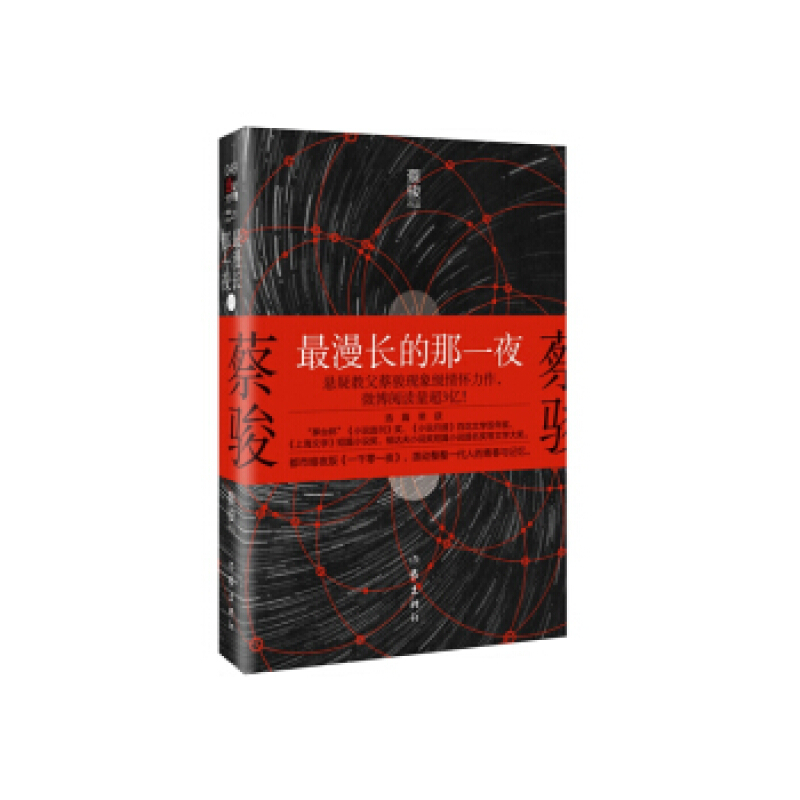 PDF下载
公众号
其他格式
PDF下载
公众号
其他格式
大小:- MB
下载:39次
离散时间信号处理 _美_ Alan V. Oppenheim /_美_ 9787121122026
- ISBN:9787121122026
- 版次:1
- 出版社:电子工业出版社
- 作者:
- 出版时间:
手机扫码免费下载
纠错留言#电子书截图
#电子书简介
店铺公告:
01 本店书籍都是正版书籍,请放心购买。
02 店内部分书籍为绝版稀缺书,因进货和保存成本较高,故售价高于当年出版的定价(书籍封面尾页的定价),请务必注意书籍价格问题,避免争议,由于书籍数量庞大,分拣查书比较耗时,快递发出后大概3-5天左右可以收到商品。。
03 关于书籍品相问题,仓库发货前会与您联系确定发货,如联系不到您会先为您发货,收到书籍后有任何问题可随时了联系在线客服。
04 购书实乃雅事,有任何问题都可联系客服为您解决。小店经营不易,请不要轻易差评,望您理解,谢谢。
05 本店开具电子发票,请确认收货后联系客服提供开票资料,工作人员将及时为您开具电子发票。
出版社:电子工业出版社
副标题:(第三版)(英文版)
原作名:Discrete-Time Signal Processing, Thrid Edition
出版时间:2011-1
出版年:2011-1
页数:1108
定价:99.80元
装帧:平装
丛书:国外电子与通信教材系列
ISBN:9787121122026
简介
《离散时间信号处理(第3版)(英文版)》系统论述了离散时间信号处理的基本理论和方法,是国际信号处理领域中的经典教材。内容包括离散时间信号与系统,Z变换,连续时间信号采样,线性时不变系统的变换分析,离散时间系统结构,滤波器设计方法,离散傅里叶变换,离散傅里叶变换的计算,利用离散傅里叶变换的信号傅里叶分析,参数信号建模,离散希尔伯特变换,倒频分析和同态反卷积。《离散时间信号处理(第3版)(英文版)》例题和习题丰富,具有实用价值。《离散时间信号处理(第3版)(英文版)》适合从事数字信号处理工作的科技人员,高等学校有关的高年级学生、研究生及教师使用。
--------------
目录
PrefaceThe Companion Website
The Cover
Acknowlments
1 Introduction
2 Discrete-Time Signals and Systems
2.0 Introduction
2.1 Discrete-Time Signals
2.2 Discrete-Time Systems
2.3 LTI Systems
2.4 Properties of Linear Time-Invariant Systems
2.5 Linear Constant-Coefficient Difference Equations
2.6 Frequency-Domain Representation of Discrete-Time Signals and Systems
2.7 Representation of Sequences by Fourier Transforms
2.8 Symmetry Properties of the Fourier Transform
2.9 Fourier Transform Theorems
2.10 Discrete-Time Random Signals
2.11 Summary
3 The z-Transform
3.0 Introduction
3.1 z-Transform
3.2 Properties of the ROC for the z-Transform
3.3 The Inverse z-Transform
3.4 z-Transform Properties
3.5 z-Transforms and LTI Systems
3.6 The Unilateral z-Transform
3.7 Summary
4 Sampling of Continuous-Time Signals
4.0 Introduction
4.1 Periodic Sampling
4.2 Frequency-Domain Representation of Sampling
4.3 Reconstruction of a Bandlimited Signal from Its Samples
4.4 Discrete-Time Processing of Continuous-Time Signals
4.5 Continuous-Time Processing of Discrete-Time Signals
4.6 Changing the Sampling Rate Using Discrete-Time Processing
4.7 Multirate Signal Processing
4.8 Digital Processing of Analog Signals
4.9 Oversampling and Noise Shaping in A/D and D/A Conversion
4.10 Summary
5 Transform Analysis of Linear Time-Invariant Systems
5.0 Introduction
5.1 The Frequency Response of LTI Systems
5.2 System Functions—Linear Constant-Coefficient Difference Equations
5.3 Frequency Response for Rational System Functions
5.4 Relationship between Magnitude and Phase
5.5 All-Pass Systems
5.6 Minimum-Phase Systems
5.7 Linear Systems with Generalized Linear Phase
5.8 Summary
6 Structures for Discrete-Time Systems
6.0 Introduction
6.1 Block Diagram Representation of Linear Constant-Coefficient Difference Equations
6.2 Signal Flow Graph Representation
6.3 Basic Structures for IIR Systems
6.4 Transposed Forms
6.5 Basic Network Structures for FIR Systems
6.6 Lattice Filters
6.7 Overview of Finite-Precision Numerical Effects
6.8 The Effects of Coefficient Quantization
6.9 Effects of Round-off Noise in Digital Filters
6.10 Zero-Int Limit Cycles in Fixed-Point Realizations of IIR Digital Filters
6.11 Summary
7 Filter Design Techniques
7.0 Introduction
7.1 Filter Specifications
7.2 Design of Discrete-Time IIR Filters from Continuous-Time Filters
7.3 Discrete-Time Butterworth, Chebyshev and Elliptic Filters
7.4 Frequency Transformations of Lowpass IIR Filters
7.5 Design of FIR Filters by Windowing
7.6 Examples of FIR Filter Design by the KaiserWindow Method
7.7 Optimum Approximations of FIR Filters
7.8 Examples of FIR Equiripple Approximation
7.9 Comments on IIR and FIR Discrete-Time Filters
7.10 Design of an Upsampling Filter
7.11 Summary
8 The Discrete Fourier Transform
8.0 Introduction
8.1 Representation of Periodic Sequences: The Discrete Fourier Series
8.2 Properties of the DFS
8.3 The Fourier Transform of Periodic Signals
8.4 Sampling the Fourier Transform
8.5 Fourier Representation of Finite-Duration Sequences
8.6 Properties of the DFT
8.7 Linear Convolution Using the DFT
8.8 The Discrete Cosine Transform (DCT)
8.9 Summary
9 Comtation of the Discrete Fourier Transform
9.0 Introduction
9.1 Direct Comtation of the Discrete Fourier Transform
9.2 Decimation-in-Time FFT Algorithms
9.3 Decimation-in-Frequency FFT Algorithms
9.4 Practical Considerations
9.5 More General FFT Algorithms
9.6 Implementation of the DFT Using Convolution
9.7 Effects of Finite Register Length
9.8 Summary
10 Fourier Analysis of Signals Using the Discrete Fourier Transform
10.0 Introduction
10.1 Fourier Analysis of Signals Using the DFT
10.2 DFT Analysis of Sinusoidal Signals
10.3 The Time-Dependent Fourier Transform
10.4 Examples of Fourier Analysis of Nonstationary Signals
10.5 Fourier Analysis of Stationary Random Signals: the Periodogram
10.6 Spectrum Analysis of Random Signals
10.7 Summary
11 Parametric Signal Modeling
11.0 Introduction
11.1 All-Pole Modeling of Signals
11.2 Deterministic and Random Signal Models
11.3 Estimation of the Correlation Functions
11.4 Model Order
11.5 All-Pole Spectrum Analysis
11.6 Solution of the Autocorrelation Normal Equations
11.7 Lattice Filters
11.8 Summary
12 Discrete Hilbert Transforms
12.0 Introduction
12.1 Real- and Imaginary-Part Sufficiency of the Fourier Transform
12.2 Sufficiency Theorems for Finite-Length Sequences
12.3 Relationships Between Magnitude and Phase
12.4 Hilbert Transform Relations for Complex Sequences
12.5 Summary
13 Cepstrum Analysis and Homomorphic Deconvolution
13.0 Introduction
13.1 Definition of the Cepstrum
13.2 Definition of the Complex Cepstrum
13.3 Properties of the Complex Logarithm
13.4 Alternative Expressions for the Complex Cepstrum
13.5 Properties of the Complex Cepstrum
13.6 Comtation of the Complex Cepstrum
13.7 Comtation of the Complex Cepstrum Using Polynomial Roots
13.8 Deconvolution Using the Complex Cepstrum
13.9 The Complex Cepstrum for a Simple Multipath Model
13.10 Applications to Speech Processing
13.11 Summary
A Random Signals
B Continuous-Time Filters
C Answers to Selected Basic
Bibliography
Index













评论列表(0)